Table of Contents
- 1 The Saturn, Sadesati and Lord of Karma in Vedic Astrology
- 1.1 The Impact of Saturn and Sadesati on Human Life
- 1.2 What is the definition of Karma’s and Role of Saturn ?
- 1.2.1 Saturn, Karma and Bhagwat Geeta
- 1.2.2 The Significance of the Saturn and Sade sati in Vedic Astrology
- 1.2.3
- 1.2.4 Fundamentals Principals of the Saturn Aspects
- 1.2.5 The study of Saturn historically as depicted in Vedic/Puranic scriptures
- 1.2.6
- 1.2.7 Scriptural Reference from Puranas
- 1.2.8 The Significance of Saturn in Vedic Astrology
The Saturn, Sadesati and Lord of Karma in Vedic Astrology
Introduction
Saturn occupies a significant position in Vedic astrology, being recognized as a highly potent and prominent celestial body. Saturn referred to as ‘Shani’ in the Sanskrit language, this celestial body is commonly linked to the principles of discipline, diligent effort, and the acquisition of karmic wisdom. The celestial trajectory of Saturn within the zodiac is meticulously observed due to its profound influence on all facets of human existence, encompassing domains such as professional pursuits and interpersonal connections. The ‘Sade sati’ period, a widely discussed phenomenon associated with Saturn, is said to be characterized by notable transformations and obstacles.
The mythology of Sade sati is centered on the notion that during the transit of Saturn through the twelfth, first, and second houses of an individual’s moon sign, a significant time of profound change may occur. The duration of this phenomenon is commonly estimated to be approximately seven and a half years, during which it is believed to evaluate an individual’s fortitude, endurance, and adaptability.
The Impact of Saturn and Sadesati on Human Life
During the Sadesati phase, individuals may encounter challenges, interruptions, and hindrances in diverse domains of life. Nevertheless, it is crucial to bear in mind that this particular timeframe has both positive and negative aspects. This experience presents an opportunity for personal development, introspection, and acquisition of significant life knowledge.
From a psychological perspective, Sadesati has the potential to compel individuals to confront their fears, address their deficiencies, and cultivate inner resilience. The process has the potential to facilitate a profound metamorphosis and enable individuals to liberate themselves from constricting beliefs and attitudes. Numerous individuals who have experienced the astrological phenomenon known as Sadesati have attested to the occurrence of heightened levels of maturity, emotional stability, and a reinforced sense of self.
Exploring the Saturn and the Sadesati Expedition
Although the Sadesati era may appear intimidating, it is crucial to approach this phase with a positive outlook and a mindset focused on personal development. Instead of harbouring anxiety towards the various problems that arise, it is more beneficial to perceive them as occasions for personal and spiritual growth. The following are few strategies for effectively navigating the Sadesati period:
- Engage in the practise of self-care, which involves attending to one’s physical, mental, and emotional well-being.
- Participate in endeavours that elicit feelings of happiness and contribute to your state of relaxation.
- Maintain a sense of practicality and realism. In order to foster a sense of connection with one’s inner self and uphold emotional equilibrium, it is advisable to engage in a regular practise of meditation or mindfulness.
- Request guidance: Engage in consultation with a proficient astrologer who possesses expertise in interpreting individual birth charts and discerning the prevailing astrological influences.
- It is vital to adopt a receptive attitude towards change.
- It is important to have a mindset that is receptive to change and adaptable in nature.
- It is important to acknowledge that change is an inherent aspect of human existence and has the potential to engender novel prospects and personal development.
- Evolve self learning, Spiritual evolution and Living life down to earth.
It is important to note that the impact of Saturn and Sadesati should be viewed as a mechanism for fostering individual development, rather than a form of retribution. Through a comprehensive comprehension of the historical narratives and a wholehearted acceptance of the transformative process, individuals can effectively navigate this temporal phase with elegance and ultimately emerge fortified and more resilient than ever before.
So , lets explore the journey of understanding Saturn and effect of sadesati on human life.
What is the definition of Karma’s and Role of Saturn ?
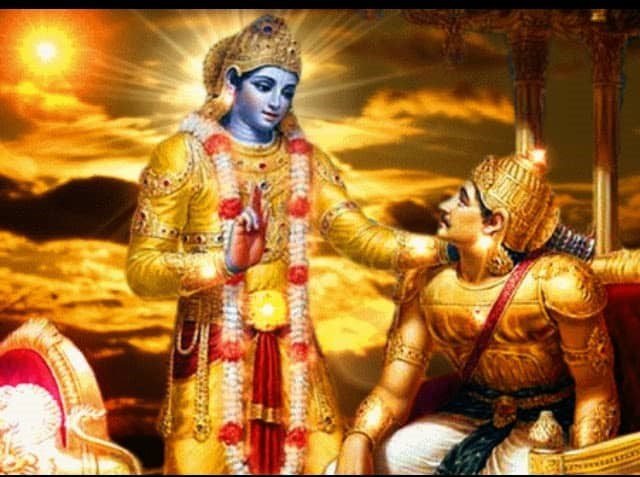
In accordance with Hinduism, the concept of divine fairness posits that God grants mankind the capacity to exercise free will in their choices between virtuous and malevolent actions. Consequently, the outcome of an individual’s actions is contingent upon the moral quality of their decision-making. Furthermore, it is believed that the collective choices made by humanity collectively contribute to the shaping of their hidden destinies. In this context, we are discussing the Karmas that pertain to our daily lives.
These Karmas are associated with the 3rd house from the 4th house, the 6th house, and the 6th lord. They arise from our ideas and are manifested through practical actions in the 10th house. Importantly, these Karmas are within the realm of our conscious mind and can be freely undertaken by ourselves.
In the realm of general practise, it is commonly seen that the examination of stored desires can be accomplished by examining the natural Karka sign, Aquarius, as well as the 4th house, which represents the Karka of the mind. By doing so, valuable insights can be gained into the potential outcomes of one’s Karmas, whether they be positive or negative, in subsequent births, based on their past actions.
Karma serves as the catalyst for the whole sequence of cause and effect, commonly referred to as Sansara-Venus (Maya). In order to achieve moksha (salvation), one must first deplete the entirety of their accumulated karmas, known as Pra-rabdha, by fully experiencing their consequences.
The concept of karma might be likened to that of a seed, as it often does not yield instant results upon its initial planting.
The generation of several karmic seeds is facilitated by our own acts, encompassing speech, thoughts, and deeds. Consequently, it is imperative to examine the comprehensive chart in its entirety. The examination of the tenth house from Mercury reveals the influence of our speech and conscious mind on our acts. Specifically, if the tenth house from Mercury is occupied by Mars, it may result in a speaker who is harsh or displays arrogance and rudeness. Thus, our speech is intricately connected to our karmic actions, either directly or indirectly. In the context of astrological beliefs, it is posited that the influence of Jupiter, when positioned as the 10th celestial body from the Moon, may engender individuals who exhibit virtuous qualities, possess healing abilities, demonstrate profound contemplation, exhibit extensive knowledge, or serve as spiritual catalysts. This influence is believed to directly impact the cognitive processes of the individual in question, as well as those in their immediate vicinity.
Saturn, Karma and Bhagwat Geeta

According to the Bhagavad Gita, the road of action, also known as karma, is described as enigmatic, and the Law of Karma is deemed unfathomable. Determining the specific karmic factors that contribute to the development of cancer, as well as discerning whether the consumption of a particular fruit is the consequence of a singular karmic action or a confluence of multiple karmic actions, presents a challenging endeavour. Determining the origin of the fruit that one presently derives pleasure from poses a challenge, ascertaining whether it is a result of the karma accumulated in the present lifetime or a consequence of past-life karmas, namely the Sanchita karma.
Under appropriate conditions, karmas that have reached maturity have the potential to yield outcomes during the same lifetime.
Karma is a philosophical concept that encompasses the principle of cause and effect, wherein actions and reactions are believed to have a direct correlation. It is often associated with notions of cosmic justice and individual accountability. The concept of cause and effect, also known as the law of sowing and reaping, operates in a rational manner whereby the outcomes one experiences are directly proportional and accurately determined, as administered by a higher power in accordance with cosmic rules. Karma can be likened to the laws of gravity in terms of predictability, as it posits that the consequences one experiences are a direct outcome of their actions towards others.
The individual who inflicts harm upon others will inevitably experience harm upon themselves at a later point in time. The Law of Karma include a crucial and inherently uncertain element known as the “delivery” or repercussions, which are under the authority of a higher power.
The concept of karma initiates the propulsion of an individual’s soul on a personal odyssey across the expanse of the universe. The concept of karma culminates when an individual attains mastery in the practise of performing actions without attachment or desire, solely in a selfless manner.
The Bhagwad Geeta elucidates that the attainment of detachment from the fruits of one’s actions, known as Karma-phala, can be achieved via the diligent pursuit of self-improvement along the path to the Divine. This involves the practise of diverse yogic disciplines.
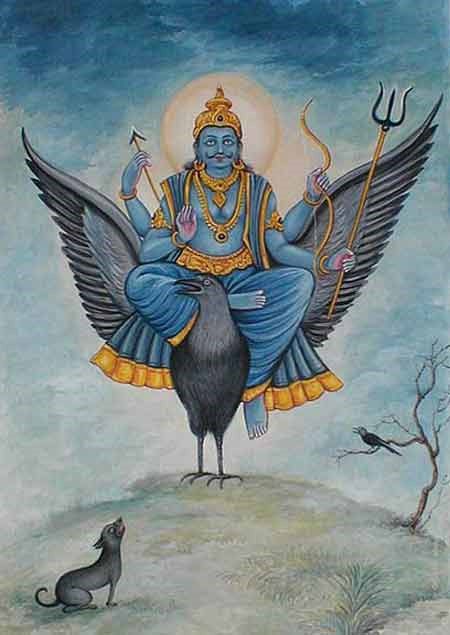
In the course of our daily existence, Lord Shani Dev vigilantly observes our accumulated and ongoing actions, enabling us to comprehend the true nature of our actions and their significant impact on our life. The cumulative result of an individual’s four karmas determines their birth, as each person is born depending on the totality of their collected karmas. If an individual has accumulated negative prarabdha (karma from former lives), they are always bound to experience its consequences in each subsequent birth, as this outcome is solely determined by the volition of the divine entity.
When the obligation to repay arises, it becomes imperative to acknowledge this responsibility. However, it is possible to rationalise these debts by engaging in virtuous actions throughout our continuous existence. The positive karma of an individual has the potential to counteract and neutralise the negative karma of another individual. The 10th house is considered the primary source of all ongoing karmic activities, and Lord Saturn has significant importance in comprehending many aspects of karma in an individual’s life.
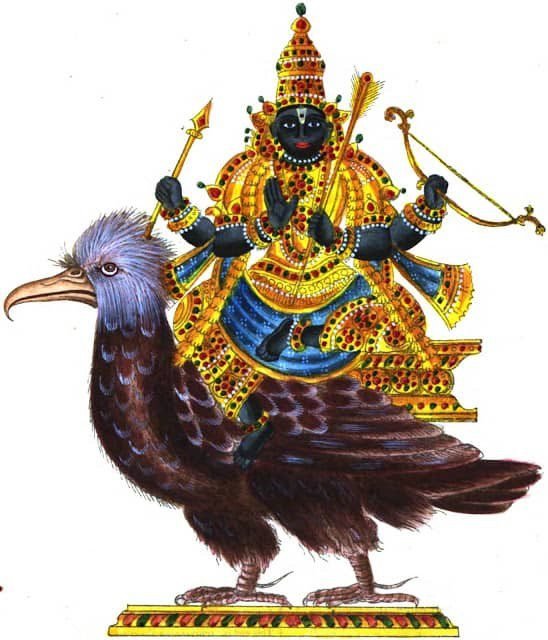
From an astrological standpoint, it is recommended to examine the 10th house relative to Saturn in order to gain insight into the various acts we engage in during our daily routines. These actions encompass a wide range of emotions and inclinations, such as want, aversion, love, hatred, and happiness, occurring on a continuous basis throughout each moment or second. The presence of benefic or malefic influences in the 10th house relative to Saturn is likely to provide either favourable or negative outcomes, depending on the inherent character of the actions or Karama. These consequences may manifest in the present lifetime or perhaps in a subsequent lifetime. The fourth house and moon are influential in generating wishes for karmas, whereas the actual execution of these wants is contingent upon the tenth house.
Prior to delving into the subject matter, it is imperative to have a comprehensive understanding of the entity known as Shani-Dev and the manner in which this entity harmonises and regulates the karmic deeds inside the life of an individual.
Saturn, known as Shani or Shana-ish-chara in Sanskrit, is referred to as the sluggish mover or the Manda Gati. It is also denoted by the term Shane-Shane, which signifies its characteristic of moving at a leisurely pace. From an astronomical perspective, it is noteworthy that among the celestial bodies, Saturn possesses the unique characteristic of exhibiting an extended duration within a given zodiac sign due to its comparatively sluggish motion. This phenomenon is attributed to the fact that Saturn requires around two and a half years to traverse a single zodiacal sign or progress through each constellation within the sidereal zodiac.
According to the Linga Purana, Lord Shani-Dev (Saturn) is said to have originated from Rudra, the solar deity. According to the Markandeya Purana, Saturn is described as the offspring of the sun god and his consort, Chaya, who is symbolically associated with the concept of shadow. The chilly and arid nature of Saturn can be attributed to its deep core structure. The individual possesses an inherent purity and satwik disposition inside, however in the context of Jyotish terminology, their external demeanour is characterised as tamasik, exhibiting forthrightness and a propensity for anger.
The individual’s sluggishness is commonly seen as lethargy, although a closer examination reveals that this perception does not align with the true nature of his condition. The individual’s leisurely pace contributes to a prolonged journey towards the intended goal, which is also notable for its rich historical background. Additionally, the protagonist’s association with Sandhya, his maternal figure, bestows upon him the attributes of wisdom and advanced age. The individual’s visual acuity is regarded as impaired, and he is reputed to possess a malevolent nature, albeit exclusively towards individuals engaged in or associated with negative karmic deeds across multiple lifetimes.
The Significance of the Saturn and Sade sati in Vedic Astrology

According to popular belief, Saturn is often associated with the potential destruction of the house it influences. However, in reality, Saturn primarily presents challenges in relation to the specific house it affects. The outcome varies depending on factors such as the placement of Saturn in a malefic or enemy sign, with the exception being the seventh house where Saturn can bring positive outcomes due to its directional strength. Conversely, when Saturn is positioned in a friendly or neutral sign, it has the tendency to enhance the qualities of the house it influences. The results also differ based on whether Saturn aspects or conjoins with other signs and houses. When Saturn is well placed, it bestows individuals with qualities such as integrity, wisdom, spirituality, fame, patience, leadership abilities, authority, longevity, organisational skills, sincerity, honesty, a sense of justice, and a keen awareness of moral principles.
When Saturn is positioned unfavourably in relation to a hostile celestial body or within a dwelling where the strength of Ashtakavrga is diminished, it has the potential to manifest various adversities for the individual, including but not limited to, personal distress, sorrow, delays, hindrances, disappointments, conflicts, despondency, and challenges. However, it is important to note that these difficulties may serve as valuable lessons pertaining to the specific house in question, allowing for the filtration of karmic seeds. Individuals influenced by Saturn tend to exhibit defensive tendencies, nervousness, and a proclivity for secrecy, yet they also possess commendable qualities such as honesty, responsibility, and loyalty. In the realm of worldly affairs, Saturn governs the western direction, Saturday is designated as its day, black is its associated colour, and the blue sapphire gemstone is attributed to Saturn. In the realm of Vedic numerology, Saturn holds dominion over the number 8.
In order to have a comprehensive comprehension of the various facets of Saturn, it is imperative to delve into the philosophical underpinnings and contextual backdrop associated with the archetype of a teacher or a stringent mentor.
Read More on Karma, Time and Kaal-chakra ;
Kaalchakra the wheel of time – How Life impacts by transiting planets on lunar mansions
Fundamentals Principals of the Saturn Aspects
The following discourse elucidates the astrological and philosophical significance of the four esteemed mantras associated with Lord Saturn :

1) The Influence of Saturn in a Specific House ( Saturn Placement Effect ) : In this context, Saturn serves as a guiding force, emphasizing the importance of practicality. It encourages individuals to embrace authenticity, loyalty, and honesty, while also emphasizing the need for self-identification within the natural order. Saturn typically diminishes negative qualities and associated characteristics within the house it occupies (for instance, if located in the 8th house, it may promote spiritual growth and alleviate fears, concerns about mortality, sexuality, and losses related to that particular house). Through this transformative process, Saturn facilitates the cultivation of positivity, infusing enthusiasm and imparting profound realization’s. By rectifying past mistakes and errors through the application of wisdom gained from previous experiences, Saturn acts as a catalyst for personal growth and rejuvenation, ultimately shaping a more favourable future trajectory. In essence, Saturn assumes the role of a trailblazer, purging the house of all negativity.
2) Saturn Direct Aspect (Lifelong Challenges): Be Prepared for Open Challenges: Here Saturn gives an equally challenging environment and opponents who can test your abilities and patience where it directly aspects, and it keeps pointing you to prepare yourself for your whole life for these open challenges. Here, Saturnine energy is directing you. Hey you! You are weak and not prepared for future life actions, and you need to work hard in this area as you lack the required energy for betterment. He is suggesting you never take a back step, never fear; you have to accept it in any case, and you have to face this challenge in your whole life unless you never become balanced and perfect, which you are feeling you can’t face in a long race. Here, Saturn is teaching you to rise as a winner. Never neglect your responsibilities; prioritise them and work hard on them. This is your open challenge area for your whole life and an important part of it. Don’t ignore it; prepare yourself and make it better for your future path.
3) Saturn 3rd House Aspect ( Test of Courage, willpower and Free will ) : The third aspect of Saturn presents individuals with challenging tasks and demanding environments that they must confront in various situations. Saturn aims to test one’s courage, willpower, and mental resilience by consistently directing them towards tasks that necessitate boldness. This metaphorical representation prompts individuals to question whether they possess the necessary attributes to fearlessly complete the tasks they perceive as insurmountable. Saturn serves as a teacher, urging individuals to eliminate the notion of “no” from their vocabulary and instead rely on their willpower and courage to overcome any obstacles associated with the specific house and sign. The lesson is to boldly and promptly finish tasks without succumbing to fear or procrastination.
4) Saturn 10th Aspect ( What need to be done, rightful karma and actions in society ) : Saturn’s 10th Aspect, also known as the Ultimate Goal, pertains to the notion that work is akin to a workshop that presents challenges. It involves recognizing that life is not solely about enjoyment, but rather about striving to achieve higher goals that are bestowed upon individuals by a higher power in each successive birth. This process entails evolving and progressing towards these goals amidst openly challenging circumstances and interactions with negative individuals. These challenges may arise from the environment or society, manifesting in the form of opposition to one’s endeavours. Consequently, Saturn advises individuals to utilise these adversities as opportunities for growth and to intelligently navigate encounters with those who consistently oppose their work. Society, in this context, is viewed as a catalyst for personal development, urging individuals to tap into the gifts bestowed upon them and employ them effectively. By doing so, individuals can elevate themselves with the aid of their unwavering spirit.
The study of Saturn historically as depicted in Vedic/Puranic scriptures
Scriptural Reference from Puranas
Based on ancient legends and scriptural accounts, Saturn is believed to have been born to Sun and Chaya, also known as Swarna. It is said that during the moment of Saturn’s birth, the Sun experienced a profound illness as a result of the inauspicious aspect of Saturn’s gaze. Consequently, a longstanding conflict has persisted between the father and son, as symbolised by the Sun-Saturn Aspect.
According to several Hindu Puranas, Shani is regarded as the progeny of Surya, the solar deity, and Chhaya, symbolising gloom. Yamaraj is identified as Shani’s sibling, while Yamuna is recognised as his sister. Shani’s hue is associated with Indraneel Mani, sometimes referred to as Neelam, which corresponds to the colour blue sapphire.
Numerous narratives exist pertaining to the origin of Shani Dev. The most widely acknowledged account is found within the ancient text known as the ‘Skanda Purana’. According to one particular rendition, the birth of Shani Dev unfolds as follows: The deity Surya was united in matrimony with Sandhya, the daughter of the divine architect Vishwakarma.
Sandhya’s inability to tolerate the luminosity emitted by the deity Surya led her to believe that through perseverance, she could enhance her own brilliance. Alternatively, she entertained the notion that her penance could diminish the overwhelming radiance of Surya. It is important to note that Sandhya worshipped Surya as her spouse, and it was through divine intervention that they were blessed with three offspring: Vaivastahva Manu, Yama Raj, and Yamuna. Despite her deep affection for her children, Sandhya remained greatly distressed by the intense radiance emanating from Surya. Consequently, she contemplated separating from him and seeking solace in her parents’ abode, where she intended to engage in rigorous penance. Should any opposition arise, Sandhya resolved to relocate to a remote and secluded location to undertake her arduous penitential practises.
Through her act of penance, Sandhya manifested a doppelgänger named Suvarna, who represented her shadow self. Sandhya entrusted her three children to Chaya, instructing her to assume the role of a mother figure and care for them. Sandhya assured Chaya that she could rely on her assistance in times of trouble, emphasising the importance of maintaining the distinction between Chaya and Sandhya, and ensuring that this distinction remained concealed from others.
The individual in question relinquished her duties to Chaya and departed for her parental residence. Upon arrival, she disclosed to her father her inability to endure the brilliance of the deity Surya. Consequently, she had left without informing her spouse. In response, her father reproached her severely, cautioning that her uninvited return would bring a curse upon both her and himself. He instructed her to promptly return to her marital home. Subsequently, Sandhya became apprehensive about the fate of the responsibilities entrusted to Chaya should she comply with her father’s directive. The whereabouts of Chaya also became a concern.
In light of the potential revelation of their clandestine activities, Sandhya sought solace in the densely forested regions of Uttar Kurukshetra.
The protagonist experienced apprehension regarding her personal safety within the jungle due to her youthful appearance and physical attractiveness. Consequently, she assumed the guise of a mare in order to conceal her true identity and initiated a period of penance. In a separate narrative, the divine union between God Surya and Chaya resulted in the birth of three offspring. Surya and Chaya enjoyed a harmonious relationship, characterised by Surya’s unwavering trust. The progeny of Chaya consisted of Manu, God Shani, and Putri Bhadra (Tapti).
According to the second narrative, the manifestation of God Shani occurred as a consequence of the esteemed ‘yagna’ conducted by Maharishi Kashyap. During the gestation period of God Shani within the womb of Chaya, Shiv Bhaktini Chaya exhibited a profound level of devotion towards God Shiva, to the extent that she neglected her own sustenance.
The intensity of her prayers throughout her penance exerted a remarkable affect on the developing child within her womb. The complexion of God Shani turned black as a consequence of Chaya’s rigorous penance, during which she endured exposure to the scorching sun without sustenance or shelter. Upon the birth of God Shani, Surya was taken aback by the presence of his dusky skin. The individual commenced to harbour scepticism against Chaya. Chaya was subjected to derogatory remarks when he asserted that the child in question was not his offspring.
Since his birth, God Shani has inherited the immense powers resulting from his mother’s rigorous penance.
The individual observed his father engaging in verbal abuse towards his mother. He observed his father with a malevolent stare. Consequently, the paternal figure’s physical form exhibited a burned black appearance. The equine companions of the celestial deity Surya came to a halt, bringing his divine chariot to a standstill. The chariot exhibited a lack of mobility. Filled with concern, the deity Surya beseeched the presence of the divine entity Shiva. The deity Shiva provided counsel to the deity Surya, elucidating the events that had transpired. As a result of his actions, the reverence for both the mother and infant has been compromised and subjected to derogation. The deity Surya acknowledged his wrongdoing and expressed remorse. The protagonist experienced a restoration of his former resplendent appearance and the revitalization of his chariot’s equine strength. Subsequently, God Shani has assumed the role of a dutiful offspring to his paternal and maternal figures, while also displaying unwavering devotion as a pupil of God Shiva.
Based on other scriptural and legendary accounts, as documented in the Brahma Purana, it is asserted that Saturn exhibited unwavering devotion towards Lord Krishna and was captivated by his divine presence. In light of this proclivity, the Sun entered into matrimony with the daughter of Chitra Rath, namely Saturn. Saturn’s spouse had remarkable strength, potency, and humility. Param Tejasvi, the consort of Saturn, approached her husband with the intention of beseeching him for the gift of progeny. However, Shani Dev was preoccupied with engaging in meditation and offering prayers to Lord Krishna. Following a prolonged period of waiting, the protagonist’s spouse became increasingly agitated and expressed her discontent by invoking a curse against Shani, beseeching that anyone and everyone encountered by him shall face utter destruction. Consequently, she invoked a curse upon Saturn, proclaiming that any anyone who encountered him would suffer complete annihilation. Due to the aforementioned characteristics, Saturn was deemed weak and its influence was believed to possess the potential to bring about destruction upon individuals.
Saturn made efforts to persuade her, and she ultimately acknowledged her error. However, she was unable to retract the curse. Saturn assumed a downward gaze, motivated by a desire to prevent harm to others. This results in Shani consistently maintaining a lowered head posture.
This narrative elucidates the detrimental influence of the drishti (aspect) of Shani.
( References from Skanda and Padma Purana )
Read More on Karma in Vedic Astrology
The Karma Theory in vedic astrology part 1: Astrology and karma
The Karma Theory in vedic astrology part 1: Know about Astrology, Past life and karma Connection ?
The Significance of Saturn in Vedic Astrology

According to the principles of Vedic astrology, Saturn is often regarded as auspicious when positioned within a specific house, while its influence on the houses it aspects is typically perceived as unfavourable. The perceived harm associated with Saturn’s influence stems from its role in imparting spiritual and worldly teachings through these aspected homes, which are essentially regarded as arenas for personal growth and developmental problems in one’s present life. Shani exhibits influence over the 3rd, 7th, and 10th houses, including a span of 270 degrees in orbital distance. One may envision the substantial magnetic impact exerted by Saturn based on its occupied position.
Shani strongly disapproves of behaviours such as fraudulent activities, deceit, dishonesty, alcohol consumption, gambling, neglecting personal hygiene, engaging in animal cruelty, and showing contempt towards God, parents, or elders.
If Shani assumes a favourable placement within an individual’s birth chart, it is likely that said individual will experience progress in various facets of life. This progress may manifest in the form of diligent work ethic, equitable conduct, and a propensity for justice. Additionally, individuals with a favourable Shani placement may enjoy a commendable social standing and a relatively healthy physical condition. Conversely, an unfavourable positioning of Shani within a birth chart may result in adverse consequences such as damage to one’s residence, occurrences of fires, accumulation of debt, disputes, and the loss of financial assets and property.
The adverse positioning of the planet Saturn, commonly referred to as “Shani,” is associated with the occurrence of dental and ocular abnormalities during early development. Historically, the movements of Saturn, often regarded as the “Great Malefic,” were met with trepidation and accompanied by cautionary messages conveyed by astrologers to their clients. These messages forewarned individuals about potential scarcity, misfortune, significant setbacks, or challenging situations.
The gift of Saturn lies in the pressure it exerts, which serves to maintain our focus on our individual journey. Similar to the zodiac sign it governs, Capricorn, Saturn’s gravity stems from the understanding that certain objectives necessitate persevering through apprehension in order to cultivate greater internal discipline. Jupiter, on the other hand, counterbalances this by instilling faith, optimism, and confidence that the diligent efforts invested will ultimately yield fruitful outcomes.
The planet Saturn does not guarantee success, nevertheless, by methodically outlining the necessary steps and persevering along this trajectory despite potential distractions and uncertainties, individuals can gradually attain a level of expertise that aligns with the standards set by Saturn. This process ultimately leads to the development of unwavering self-confidence.
The influence of Saturn is often perceived as weighty and constraining, which aligns with the inherent characteristics of the physical realm. In instances where individuals feel overwhelmed, inert, or despondent, they may relinquish their autonomy and grant authority to another figure. This authority can manifest in various forms, such as a superior at work, a paternal figure, a spouse, an educator, a confidant, or even an internalised critical voice. Following a period of sufficient humility, individuals may ultimately choose to assert their independence and assume the role of self-governance.
The astrological placement of Saturn in one’s natal chart, specifically in terms of its sign and house position, indicates the potential areas in which significant life challenges may manifest. Despite any negative connotations associated with this celestial body, it is important to recognise that Saturn should not be regarded with fear. In fact, the attainment of success following the overcoming of obstacles can be profoundly fulfilling, accompanied by a profound and enduring understanding of life. This invaluable outcome is bestowed upon our individual destinies by the influence of Saturn, also known as Shani.
According to belief, Prajapati and Yam are considered to be the Adhidevta and Pratyadhidevta of Saturn, respectively.
Saturn is associated with Lord Krishna’s lineage and is depicted as riding a vulture and a chariot crafted from iron. Additionally, Saturn is recognised by other appellations, including Asit, Aarki, Chhayatmaj, Mand, Shanaishchar, Suryaputra, Ravij, Pangu, Saur, and Bhaskari.
In Vedic astrology, Saturn is considered the Karak planet for the 6th, 8th, and 10th houses, as well as for the concept of detachment.
Saturn serves as the significator planet for coal, iron, eggplants, garments of black or blue hue, split black lentils, black grapes, and Indian blackberries.
Saturn is widely regarded as a Karak planet for objects exhibiting a blue hue. It is commonly linked to the anatomical structures of ligaments and the stomach. In the context of detachment, Saturn’s potency within the Kundali is crucial for attaining success. Additionally, Saturn can be associated with the domains of sculpting, service, agriculture, and the labouring class. Furthermore, Saturn’s influence extends to the temporal aspects of an individual’s life, particularly their age and longevity. Favourable placement of Saturn within a horoscope is believed to bestow a prolonged lifespan.
Despite its negative reputation, Saturn is widely regarded as a symbol of instruction and guidance. It exhibits characteristics akin to those of an educator, disciplining individuals for their transgressions while rewarding them for their virtuous actions. Furthermore, Saturn is associated with the concept of justice, assuming the role of a judge and dispensing equitable outcomes based on an individual’s conduct. Consequently, individuals who engage in wrongdoing and possess unfavorable karma are duly recompensed.
Saturn governs the skeletal structure of the human body, particularly the larger bones found in the legs. In accordance with its inherent nature, Saturn is associated with the manifestation of chronic ailments that tend to persist over an extended period of time, often proving to be challenging to remedy. Consequently, individuals afflicted by such conditions must endure prolonged periods of illness. Moreover, those influenced by Saturn’s energy are compelled to exert significant effort in their endeavors throughout life. Saturn symbolizes the laboring class, individuals who toil diligently to secure meagre sustenance. Additionally, Saturn exercises dominion over land and subterranean resources, thereby exerting control over mining operations. Iron is the metal associated with Saturn, while its representative colors are black and blue. The zodiac signs governed by Saturn are Capricorn and Aquarius, with its exaltation occurring in Libra and debilitation in Aries. Aquarius serves as Saturn’s moon-trikona sign.
Saturn is characterized by its adherence to discipline and strictness, and it strongly opposes chaos and disobedience. In the realm of Hindu astrology, Saturn holds significant importance. This celestial body instills fear in individuals due to its unwavering commitment to discipline and strictness. The gradual movement of Saturn across the zodiac offers two significant periods known as Sade Sati and Dahiya. These periods occur multiple times throughout an individual’s life. Sade Sati refers to the phase when Saturn transits the twelfth and second houses relative to the natal moon. Similarly, the period of Dahiya occurs when Saturn is positioned between the fourth and eighth houses from the natal moon. The duration of Sade Sati spans seven and a half years, while the period of Dhaiya lasts for two and a half years.
These two periods are widely acknowledged as challenging phases in an individual’s life. During this time, individuals encounter several adversities and difficulties without receiving any relief or support. From an astrological perspective, this period is believed to be conducive to personal growth and enlightenment, despite the hardships experienced.
Conclusion :
The experience of enduring hardship can be seen as a means of atoning for one’s transgressions. This concept allows for an examination of the contrasting characteristics of Mars and Saturn. Specifically, individuals influenced by Mars may be driven towards criminal behaviour or theft as a result of the difficulties they face. Conversely, Saturn’s influence prompts individuals to embark on a spiritual journey, compelling them to reflect upon the actions that have led to their current state of suffering. Over time, this process leads to a transformation towards righteousness.
Stay connect for next part where we will discuss about remedies of Sadesati, Story behind lord of karma which have strong therapeutic effect on human being actions and self understand. Keep reading and stay connected.
To be Continued…
Regards,
Rocky Jamwal | Founder | Author | Vedic siddhanta
Source, Reference and link,
- Padma and Linga Puran
- Shani Shaman, Internet and Wikipedia
- https://www.wisdomlib.org/hinduism/book/the-padma-purana/d/doc364205.html
- Bhagwat Geeta, Geeta Press, Chapter Karma Yoga
Related Consultation :
Views: 325

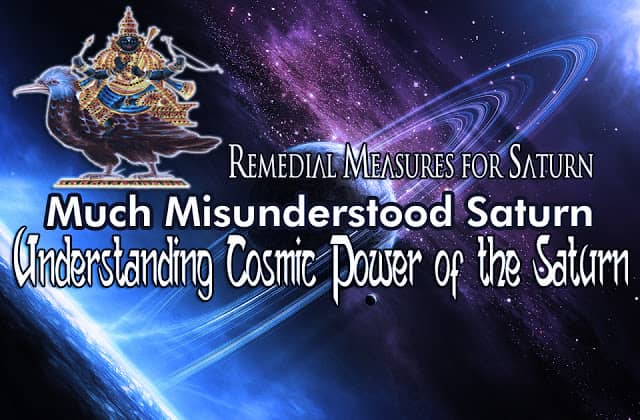




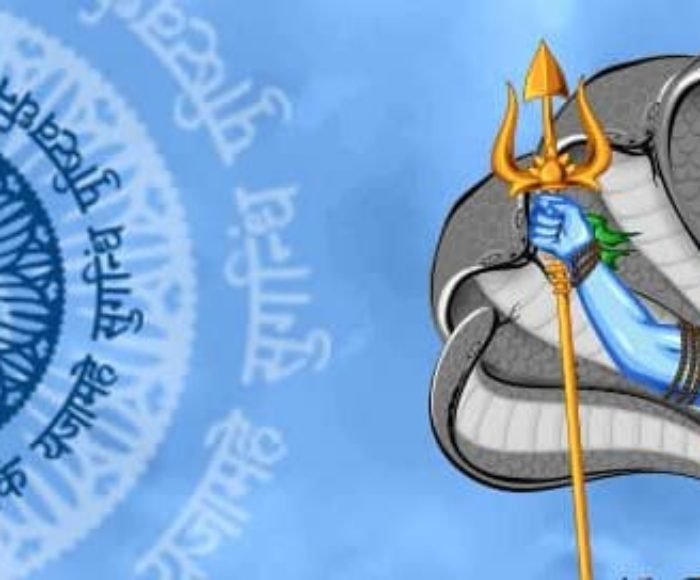
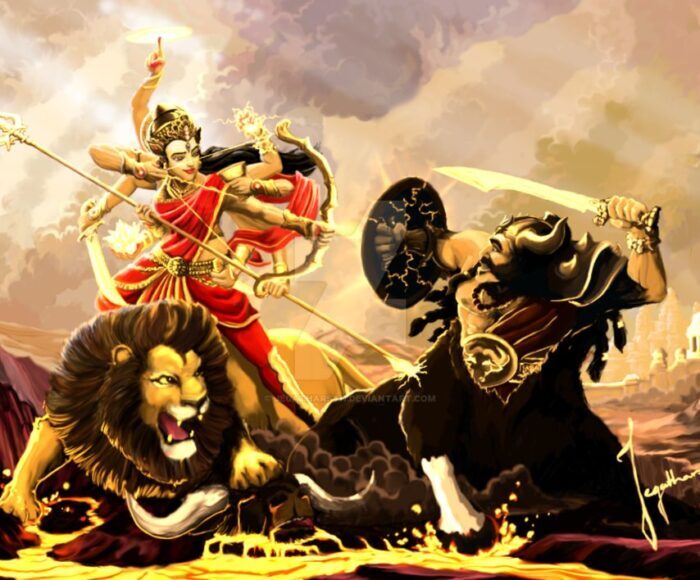
Comment (01)